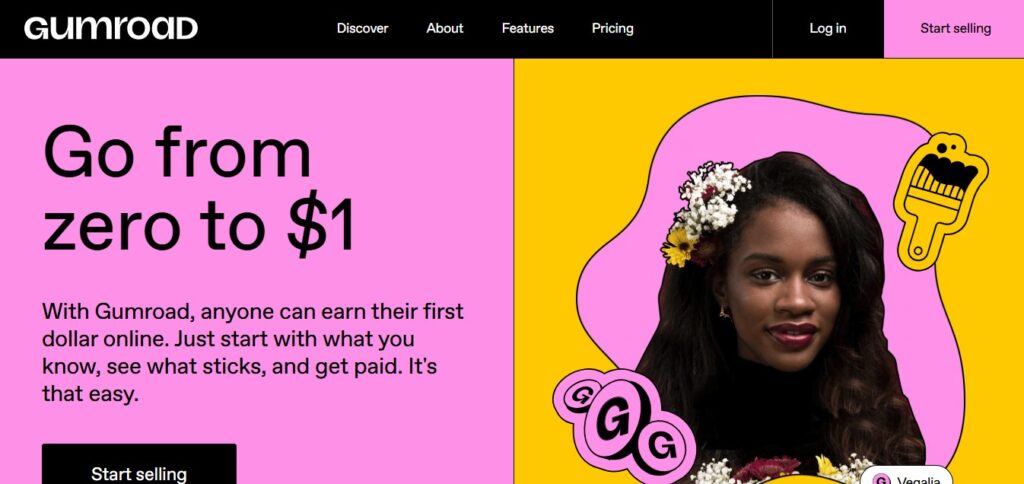
In the ever-evolving world of digital entrepreneurship, platforms like Gumroad and Payhip have emerged as powerful tools for creators and solopreneurs who want to turn their knowledge, skills, or passion into profit. Whether you’re selling eBooks, courses, templates, or design assets, these platforms offer a straightforward, low-barrier entry into the world of online business.
In this ultimate guide, we’ll walk you through everything you need to know about selling on Gumroad or Payhip, how they compare, and how to maximize your sales using either platform — even if you’re just starting with zero capital
Check out our free business plan generator
Why Choose Gumroad or Payhip?

Gumroad and Payhip both cater to independent creators who want to sell digital products, memberships, and even physical goods without complex setup processes. They’re beginner-friendly, require no coding skills, and come with built-in features to help you market and manage your products efficiently.
Here’s why these platforms stand out:
- Low or No Startup Costs
- Simple Storefront Customization
- Integrated Payment Systems (PayPal, Stripe)
- Digital File Delivery
- Built-In Analytics
- Affiliate Program Options
Gumroad vs. Payhip: Which One Should You Choose?
Let’s break down the key differences and similarities:
| Feature | Gumroad | Payhip |
|---|---|---|
| Pricing | Free (with fees), Premium option | Free (with fees), Premium available |
| Transaction Fees | 10% (free plan) | 5% (free plan) |
| Custom Domains | Available on paid plans | Free, even on basic plan |
| Design Customization | Minimal | More flexible |
| Product Types | Digital, physical, memberships | Digital, physical, coaching |
| Upsells & Coupons | Yes | Yes |
| Payouts | Weekly | Instant (via Stripe or PayPal) |
Verdict:
- Choose Gumroad if you want simplicity and access to a large built-in audience.
- Go with Payhip if you want better customization and lower fees upfront.
Step-by-Step: How to Start Selling on Gumroad or Payhip
Step 1: Decide What You Want to Sell This could be anything from:
- eBooks or guides
- Notion templates
- Digital planners or printables
- Courses or video tutorials
- Coaching sessions
- Subscription-based content
Step 2: Set Up Your Free Account You can create an account on both platforms without any initial cost. All you need is an email address and a verified PayPal or Stripe account for receiving payments.
Step 3: Upload Your Product Get your digital files ready and craft an engaging product description. Make sure to:
- Highlight the benefits
- Add visuals or preview images
- Use SEO-friendly keywords
Step 4: Price Your Product Strategically Consider setting a fixed price, using a flexible pay-what-you-want model, or offering time-limited discounts. Experiment with various pricing strategies to discover what appeals most to your target audience. see what resonates most with your audience.
Step 5: Customize Your Storefront While Gumroad is simpler, Payhip lets you design your store with more freedom. Add your logo, brand colors, and social media links to make your storefront reflect your brand.
Step 6: Set Up Marketing Tools Both platforms allow you to:
- Collect emails
- Offer discount codes
- Set up affiliate programs
Use these tools to build your audience and drive sales over time.
How to Drive Traffic and Make Sales
Even the best products won’t sell without visibility. Proven strategies to attract visitors to your Gumroad or Payhip store include:
1. Build an Audience
Start by growing your presence on one or two platforms (Instagram, TikTok, X, or LinkedIn). Share value-driven content that aligns with what you’re selling.
2. Use Email Marketing
Start collecting emails with a lead magnet. Send regular newsletters with tips, stories, and product updates. Both Gumroad and Payhip make it easy to gather customer emails automatically during the purchase process.
3. Leverage SEO
Enhance your product titles and descriptions by incorporating relevant keywords that your target audience is actively searching for. For example: “Notion template for budget tracking” or “Beginner guitar course for teens.”
4. Collaborate with Influencers
Offer affiliates a commission for promoting your product. Both platforms have affiliate tools built-in.
5. Repurpose Content
Turn blog posts into carousels, podcast episodes into short videos, and FAQs into tweet threads. This multiplies your visibility without extra effort.
Pro Tips for Maximizing Sales
- Test different thumbnails and product titles to see which convert better
- Bundle products to increase average cart value
- Add urgency using limited-time offers or bonuses
- Use testimonials and social proof to build trust
- Regularly update your products based on customer feedback
How to Use Gumroad to Sell Digital Products & Make Profits
1. Sign Up & Set Up Your Store
To get started with Gumroad, visit their website and sign up for a free account. Once registered, customize your store by adding a profile picture, bio, and branding elements. Gumroad allows you to create a simple, clean storefront where customers can browse and purchase your digital products.
2. Upload & Price Your Products
Next, upload your digital products (e.g., ebooks, courses, software, or art). Set a price, add a compelling description, and include high-quality images or previews. Gumroad supports “pay-what-you-want” pricing, subscriptions, and one-time payments. You can also offer discounts or bundles to attract more buyers.
3. Promote Your Gumroad Link
Gumroad provides a direct link to your product, which you can share on social media, email newsletters, or your personal website. Use SEO-friendly descriptions and hashtags to increase visibility. Gumroad also has built-in features like affiliate marketing and upsells to maximize earnings.
4. Get Paid & Scale Your Business
Gumroad processes payments and delivers files automatically. They charge a small transaction fee (around 10%), and you can withdraw earnings via PayPal or direct bank transfer. Track sales analytics to optimize your strategy and expand your product lineup for long-term profits.
How to Use Payhip to Sell Digital Products & Make Profits
1. Create an Account & Customize Your Store
Sign up on Payhip’s website and choose a free or paid plan based on your needs. Customize your store with a logo, colors, and domain name for a professional look. Payhip offers more branding flexibility than Gumroad, making it ideal for businesses.
2. Add & Price Your Digital Products
Upload your digital files (ebooks, music, templates, etc.) and set pricing options, including subscriptions, payment plans, and coupons. Payhip allows you to add licensing terms, which is useful for software or resellable products.
3. Market Your Payhip Store
Share your store link on social media, blogs, and YouTube. Payhip supports SEO tools, email marketing integrations, and affiliate programs to help drive traffic. You can also embed products on your website for seamless sales.
4. Receive Payments & Grow Your Income
Payhip deposits earnings directly into your bank or PayPal account. Their fees are competitive (starting at 5% + transaction fees), and they provide detailed sales reports. Use upsells, cross-sells, and membership options to increase revenue over time.
Both platforms are great, but Gumroad is simpler for beginners, while Payhip offers more advanced e-commerce features. Choose based on your business needs!
Final Thoughts: You Don’t Need Fancy Tech to Make Online Sale
Whether you’re launching your first digital download or scaling a small empire of mini-courses, platforms like Gumroad and Payhip remove the tech headaches and let you focus on what matters: delivering value and making sales.
No large startup capital. No coding knowledge. Just your skill, creativity, and willingness to start.
So what are you waiting for? Choose your preferred platform, roll out your first digital product, and harness the power of the internet to generate sales.
Save this post so it’s handy when you’re ready to begin or need a quick recap!
Check out our free business plan generator



This guide is super helpful for anyone looking to dive into selling digital products! I love how it breaks down the differences between Gumroad and Payhip, making it easier to choose the right platform. The tips on growing your audience and driving sales are practical and actionable, especially for beginners. I’m curious, though, how do you decide which social media platform to focus on first? Instagram or TikTok? Also, the idea of turning blog posts into carousels is genius—have you tried it yourself? I’d love to hear about your experience with affiliate tools on these platforms. Do they really make a significant difference in sales? Overall, this guide feels like a great starting point, but I’d love to hear more about the challenges you’ve faced while using Gumroad or Payhip. What’s one thing you wish you knew before starting?